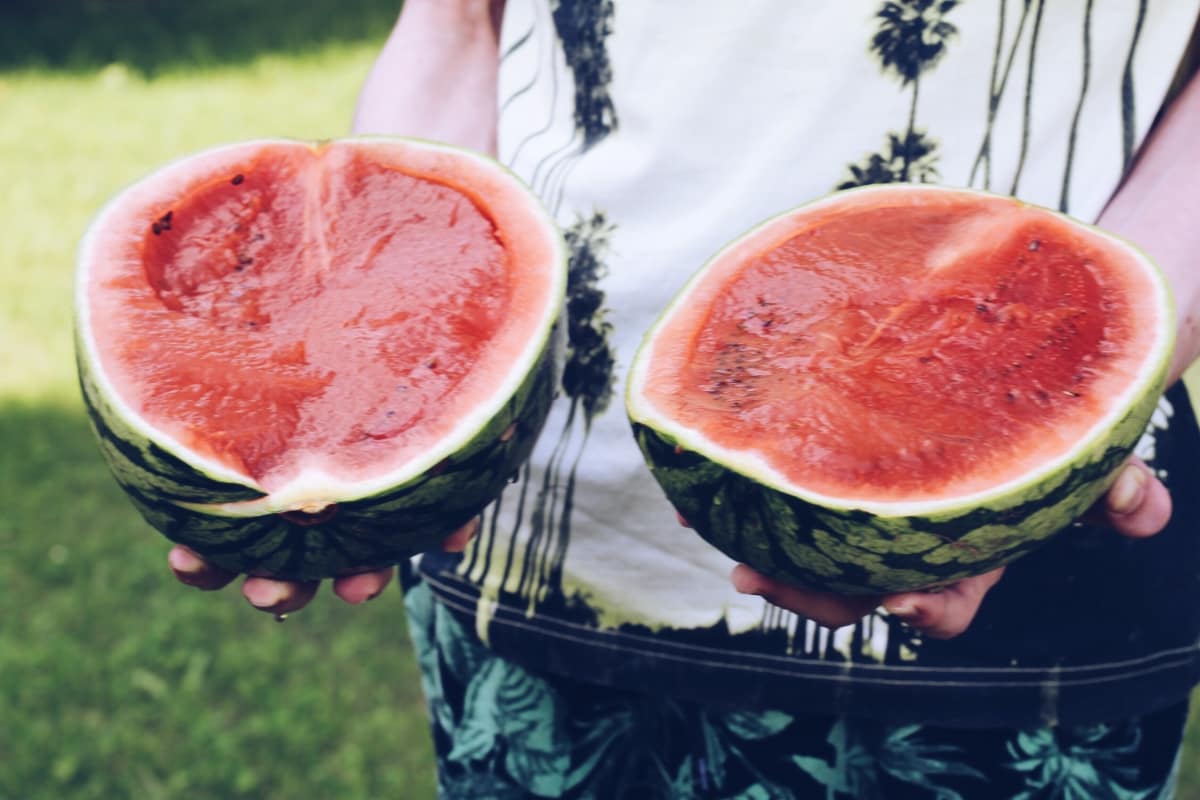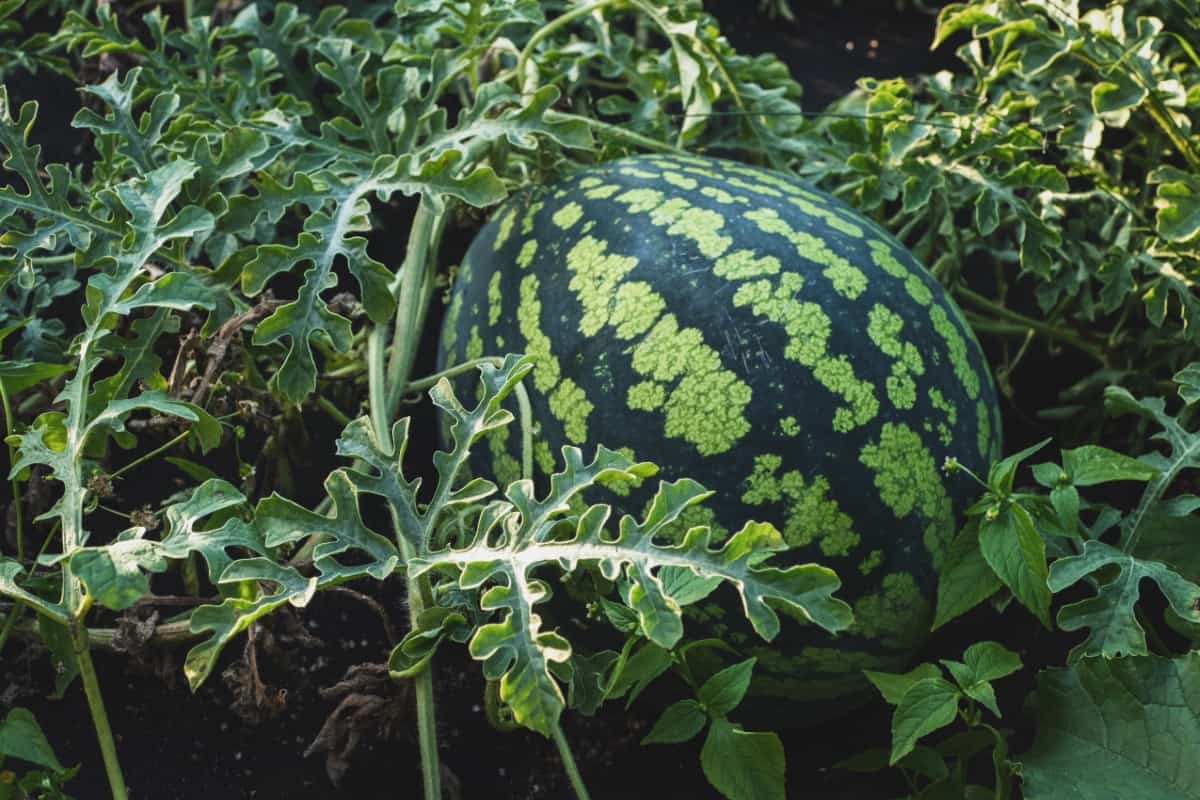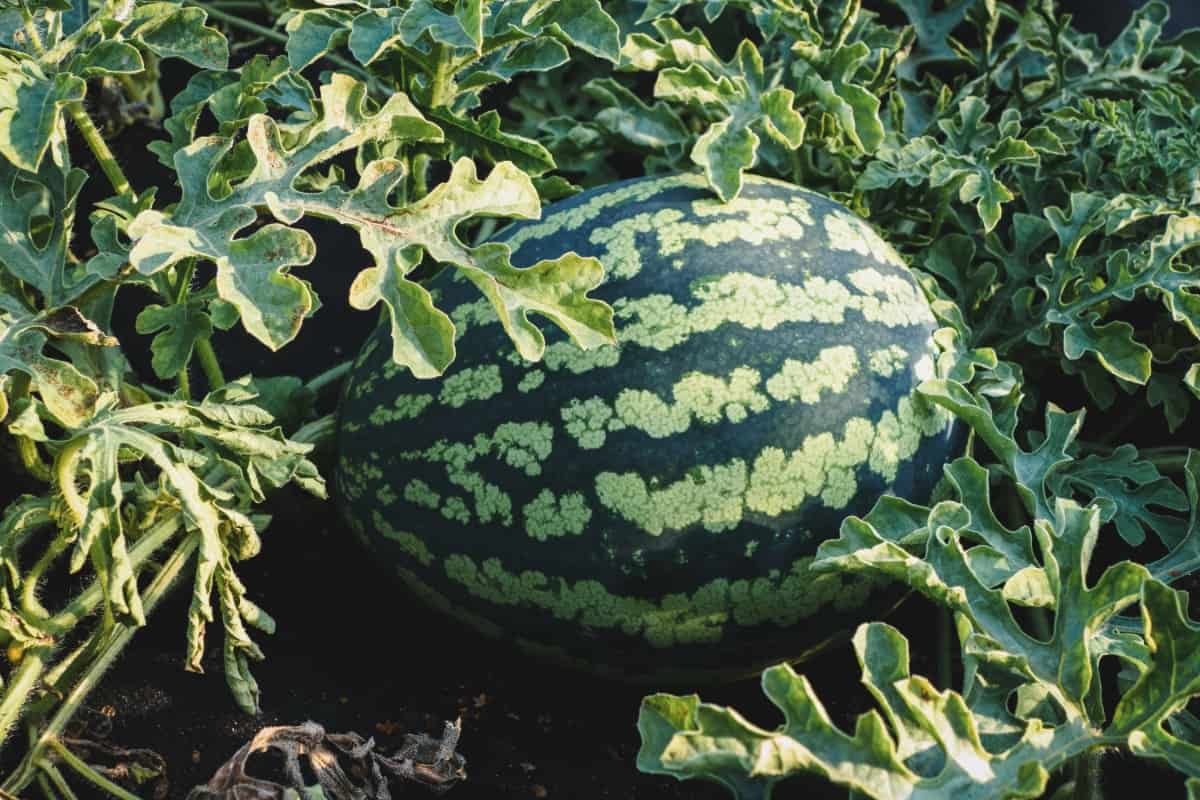Watermelon is the quintessential summer fruit that brings back memories of lazy days by the pool and backyard barbecues. There’s nothing quite like sinking your teeth into a juicy slice on a hot day. Managing the size of your Watermelon fruits is crucial if you want to enjoy a bountiful harvest with large and flavorful melons. It involves understanding the factors that affect Watermelon fruit size and implementing techniques to maximize growth.

How to Increase Watermelon Fruit Size
Optimizing Soil Nutrients for Larger Watermelon Fruits
One of the key factors in achieving larger Watermelon fruits is optimizing soil nutrients. By providing your Watermelon plants with the right balance of essential nutrients, you can ensure their healthy growth and maximize fruit size. First and foremost, it’s important to conduct a soil test before planting your Watermelon seeds or seedlings. This will help you determine the current nutrient levels in your soil and identify deficiencies that need to be addressed. Based on the results, you can then make targeted adjustments to optimize soil fertility.
Nitrogen is crucial for foliage development when fertilizing Watermelons, while phosphorus promotes root growth and flower formation. Potassium plays a key role in overall plant health and fruit quality. In addition to macronutrients like nitrogen, phosphorus, and potassium, micronutrients also play a vital role in supporting optimal plant growth. These include elements like iron, manganese, zinc, copper, boron, etc., which are required by plants in smaller quantities but are equally important.
Maximizing Sunlight Exposure for Bigger and Better Watermelon Fruits
One crucial factor in growing bigger and better Watermelon fruits is maximizing sunlight exposure. Sunlight is like fuel for plants, providing them with the energy they need to produce larger fruits. It’s important to choose a location that receives ample sunlight throughout the day.
Watermelons thrive in full sun, so make sure there are no obstructions, such as trees or buildings, that may shade your plants. Proper spacing between plants is essential to ensure each plant gets enough sunlight. Crowded plants can block each other’s access to light, leading to smaller fruits. Give each Watermelon plant enough room to spread out and receive adequate sun exposure.
The Role of Pruning in Increasing Watermelon Fruit Size
Pruning plays a crucial role in increasing Watermelon fruit size. One important aspect of pruning is removing excess foliage. Watermelon plants tend to grow vigorously, resulting in dense foliage that limits sunlight penetration. Thinning out some leaves allows more sunlight to reach the developing fruits. Sunlight is vital for photosynthesis, which fuels fruit growth and sugar production.
Another benefit of pruning is improving air circulation within the canopy. Dense foliage creates a humid microclimate that can promote disease development and hinder fruit growth. Pruning helps create space between plants, allowing better airflow and reducing the risk of diseases like powdery mildew or fungal infections. Additionally, pruning helps manage vine length. Controlling the vine’s growth by trimming excessive shoots redirects nutrients to fewer fruits, promoting their size and quality.
In case you missed it: The Ultimate Guide to the Top 16 Best Watermelon Varieties

It also makes harvesting easier by preventing an overly tangled mess of vines. Timing is crucial when pruning Watermelon plants. It’s best to start early in the growing season before excessive vegetative growth occurs but after seedlings are well-established. Regular maintenance throughout the season ensures optimal vine health and fruit development.
Irrigation Techniques for Larger Watermelon Fruits
Irrigation plays a crucial role in the growth and development of Watermelon fruits. To ensure larger fruit size, it is important to implement effective irrigation techniques. It’s essential to provide consistent and adequate moisture throughout the growing season. Watermelons have high water requirements, especially during hot summer months. Therefore, regular watering is necessary to prevent stress and promote optimal fruit development.
Drip irrigation is highly recommended for Watermelon cultivation as it delivers water to the plant roots, minimizing evaporation and maximizing efficiency. This method also helps reduce weed growth by targeting only the desired area. Additionally, proper timing of irrigation is vital for bigger fruits. Watermelons require more water during flowering and fruit set stages compared to other phases of growth. By providing sufficient moisture at these critical periods, you can support healthy pollination and enhance fruit development.
Fertilizer Application for Bigger Watermelon Fruits
When it comes to growing bigger Watermelons, proper fertilizer application is essential for achieving bigger and juicier fruits. It’s important to choose a fertilizer that is specifically formulated for Watermelon plants. Look for one with a higher ratio of nitrogen to encourage vegetative growth during the early stages. As the plants start producing flowers and setting fruit, switch to a fertilizer with a higher ratio of phosphorus and potassium. These nutrients promote flower development and enhance fruit enlargement.
To ensure optimal absorption, apply fertilizers evenly around each plant, avoiding direct contact with leaves or stems. You can either use granular fertilizers by broadcasting them on the soil surface or opt for liquid fertilizers applied through regular irrigation. Remember that overfertilization can be detrimental to your Watermelon crop. Follow manufacturer instructions regarding dosage rates and frequency of application.
Watermelon Fruit Thinning: When, How, and Why to Thin Fruits for Optimal Growth
When it comes to growing Watermelons, size does matter. One of the key techniques in achieving larger Watermelon fruits is fruit thinning. Fruit thinning simply means removing some of the developing fruits from the plant. This practice allows the remaining fruits to receive more nutrients and resources, resulting in better growth and bigger size.
It’s best to begin this process when the fruits are still small – around the size of a tennis ball. At this stage, you can evaluate which ones have the potential for optimal growth. To properly thin your Watermelon fruits, gently remove any excess or misshapen ones with pruning shears or scissors. Aim for spacing between each remaining fruit so they have enough room to expand without crowding each other out.
Monitoring and Controlling Pests and Diseases for Larger Watermelon Fruits
When it comes to growing Watermelon fruits, one of the key challenges that farmers face is dealing with pests and diseases. These unwanted visitors can cause stunted growth and smaller fruits. However, by implementing proper monitoring and control measures, you can ensure that your Watermelon fruits grow big and healthy.
In case you missed it: Watermelon Growing Tips, Tricks, Ideas, and Secrets

Look out for common issues such as aphids, spider mites, powdery mildew, or bacterial wilt. If you spot any symptoms like yellowing leaves or unusual spots on the fruit, take immediate action. There are several methods you can employ to control these problems effectively. One approach is using natural predators like ladybugs or beneficial insects that feed on harmful pests. You can also opt for organic sprays or insecticidal soaps to keep pest populations in check without harming the environment.
Harvesting Watermelon Fruits at the Right Time: The Importance of Timing for Maximizing Fruit Size and Quality
Harvesting Watermelon fruits at the right time is crucial for maximizing fruit size and quality. The timing of when to harvest can greatly impact the taste, texture, and overall appeal of your Watermelons. One key factor to consider is the ripeness of the fruit. Watermelons should be harvested when they are fully matured but not overripe. This can be determined by examining several indicators such as skin color, tendril drying, and thumping sound. When a Watermelon reaches its peak ripeness, its skin will turn dull instead of glossy.
Additionally, if you notice that the tendril closest to the fruit has completely dried up or turned brown, this is a good sign that it’s ready to harvest. Thumping or tapping on a ripe Watermelon should produce a deep, hollow sound rather than a high-pitched one. This indicates that the flesh inside is firm and juicy. Timing also plays a role in ensuring optimal sweetness and flavor. If you wait too long to harvest your Watermelons, they may become overly sweet or even mushy. On the other hand, harvesting too early can result in underdeveloped flavors.
Temperature Management for Bigger Watermelon Fruits
- Choose the right location: Plant your Watermelon vines where they will receive ample sunlight throughout the day. This will ensure optimal growth and fruit development.
- Monitor soil temperature: Use a soil thermometer to check the temperature of your Watermelon patch regularly. The ideal range is between 24-29°C. If it drops below this range, consider using row covers or mulch to retain heat.
- Protect from extreme heat: High temperatures above 35°C can negatively impact fruit set and size. Provide shade during peak hours or use shade cloth to protect delicate young fruits.
- Avoid frost damage: Watermelons are sensitive to frost, so make sure that all dangers of frost have passed before planting your seedlings outdoors.
- Proper ventilation: Good air circulation around the plants helps regulate temperature and reduce disease pressure, so avoid overcrowding and prune any excessive foliage if necessary.
Watermelon Tree Maintenance and Training for Increased Fruit Size
- Pruning: Regular pruning helps maintain the shape and structure of the tree, allowing better air circulation and sunlight penetration.
- Trellising: Using a trellis system can support the weight of growing Watermelons, preventing them from touching the ground where they may rot or become damaged. This also allows more space for other fruits to develop on the vine.
- Pollination Assistance: Watermelon trees rely on bees for pollination, so it’s important to attract these beneficial insects to your orchard by planting flowers nearby or using bee-friendly techniques.
- Mulching: Applying mulch around the base of your Watermelon trees helps conserve moisture, suppress weeds, and regulate soil temperature – all factors that contribute to healthier plant growth.
- Pest Control: Regularly monitor your trees for signs of pests or diseases. Implement appropriate measures like natural predators or organic sprays if necessary to protect your fruits.
In case you missed it: 22 Common Problems of Watermelon Plants: How to Fix Them, Solutions, and Treatments

Conclusion
Increasing Watermelon fruit size requires careful management and attention to various factors such as soil nutrients, sunlight exposure, pruning, irrigation techniques, fertilizer application, fruit thinning, pest and disease control, timing of harvest, temperature management, and tree maintenance. By optimizing these aspects in your orchard or garden, you can enhance the growth and development of your Watermelon fruits.
- How to Grow Tomatoes Organically at Home: A Comprehensive Guide
- Organic Gardening on a Budget: Low-Cost Methods and Materials
- Gongura Seed Germination and Planting Methods
- Cabbage Seed Germination and Selection
- Broccoli Seed Germination and Selection
- Asparagus Seed Germination and Variety Selection
- Seasonal Flower Gardening: Best Practices for Spring, Summer, Fall, and Winter
- How to Grow Hibiscus from Flower
- Plantation Ideas for Home Decoration: A Beginners Guide